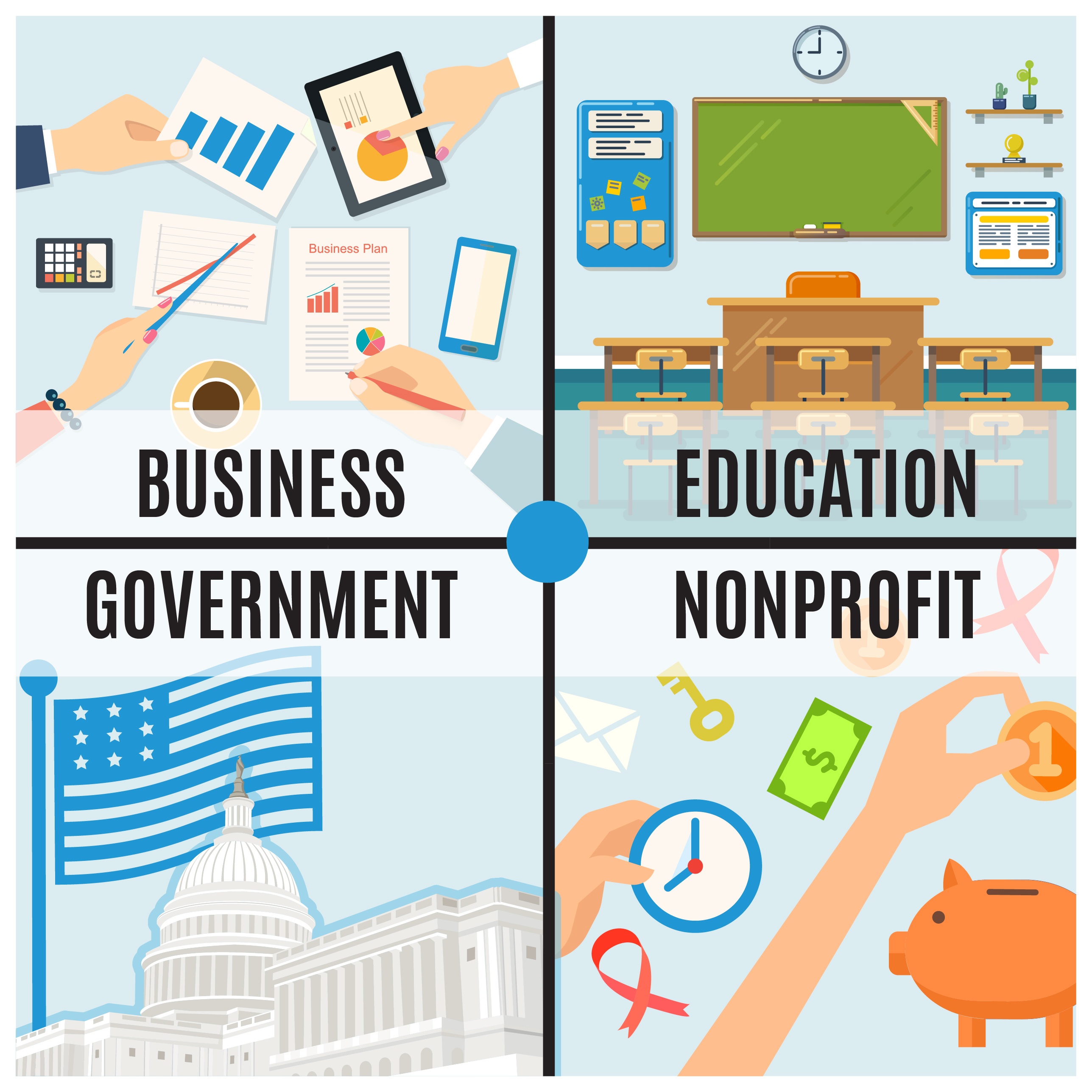“To foster economic growth, innovation clusters need to draw on the power of an interrelated ‘quad’ of sectors: public, private, civil, and academic.” – Ernest J. Wilson III, USC
Earlier this summer, in a meeting with Kyla Frye of the WT Enterprise Center, I was introduced to the concept of the “Quad,” an economic model created by a dean at the University of Southern California. Jeff Reid, Incubator Director at the WT Enterprise Center, had written a report on the model for an Economic Development capstone project.
In essence, the model suggests that collaboration and vision alignment across four sectors — government, business, nonprofit and academic — is the key to a community’s maintained economic growth.

On the surface, the concept may seem simplistic. However, collaboration is a rarity in a capitalistic society; an often praised, but rarely initiated ideal. This emphasized by the fact that, historically, cities seeking sustained economic growth have concentrated efforts on only one or two sectors.
According to Ernest J. Wilson III, the man behind the “Quad” model, these communities have misunderstood the foundation of innovation- all four proposed sectors must be engaged internally and externally to be truly successful.
The implicit details and underlying complexities of Wilson’s model initially engaged my curiosity; but the projected implications — economic growth through “sustainable, serial innovation” — are what secured that fascination. Establishing an innovation cluster, i.e. a hub of technology, entrepreneurship, and research, in any community is no small feat, but for communities in pursuit an innovation cluster, even failed attempts yield progression and a better business ecosystem.
Amarillo is positioned for change. In our community, the “Quad” model and its hypothesized, yet promising results demand consideration.
The “Quad”
Wilson outlines the function of each quadrant and implementation of the model in his paper entitled, “How to Make a Region Innovative.”
First, it is important to understand why each sector was intentionally selected according to the substantial influence each has in enhancing a community’s quality of life and determining success of the business environment.
Government provides and maintains the infrastructure and policy allowing business to grow unhindered; business, motivated by revenue, competition, and adaption, is the engine of an innovation cluster; nonprofits and nongovernmental organizations provide a more comprehensive understanding of a community’s needs, knowledge at the grassroots level; and academia is responsible for supplying the workforce and encouraging research and intellectualism.
Next, Wilson proposes three steps for implementing the “Quad” model. The first step is to establish cross-quadrant networks, a sort of “social infrastructure,” to build trust across sectors, foster partnerships, and initiate cross-sector projects. Management reform is the second step, such as organizational structure and incentives to encourage creativity in the workplace. The final step is identifying, mentoring and investing in innovators. Depending on the community, that is achieved through either retainment or attraction.
Development within each quadrant and engagement across quadrants is necessary for successful execution of Wilson’s model. Certainly, building this environment in which entrepreneurs, creatives, and intellectuals thrive is not a simple task; however, most likely, what we want for our community cannot be achieved and surpassed until there is a big-picture, long-term vision alignment in all four quadrants- private, public, civil, and academic.
The “Quad” And The AEDC
At the heart of Wilson’s model, you find the ideal a “rising tide will lift all boats.” In any community, particularly Amarillo, significant progress will not be accomplished through the efforts of one man or one sector.
At the heart of the economic development, you also find the ideal a “rising tide will lift all boats.”
Working at the AEDC this summer, I have discovered economic development is about the bigger picture. Yes, there is an agenda that includes recruiting primary businesses, developing workforce and promoting our community to create jobs, retain jobs and strengthen our economy, but, at the end of the day, a diversified, stimulated economy equals improved quality of life. Job creation is not accurately represented by a number or a salary, but rather by a life well-lived.
Conclusion
Unlike most businesses or organizations, the AEDC works on a macro scale. One valuable lesson I have learned during my internship is that, in strategy development, considering impact instead of profit is always beneficial.
It is easy to be blinded by selfish agendas. The entirety of my life, I have fought to maintain a broader, objective perspective. Honestly, I rarely succeed, but in work or in life, an expanded worldview is necessary to create the change we want to see.
In Amarillo, maybe it’s time to be intentional about cross-sector engagement, to determine our dream, and to outline our long-term strategy. And maybe it is time to seriously consider application of Ernest Wilson’s “Quad.”
Check out my further analysis I completed on Ernest Wilson’s paper, “How to Make a Region Innovative.”
{{cta(‘2100dce2-649a-410e-b9aa-b130cf1273a2’)}}








